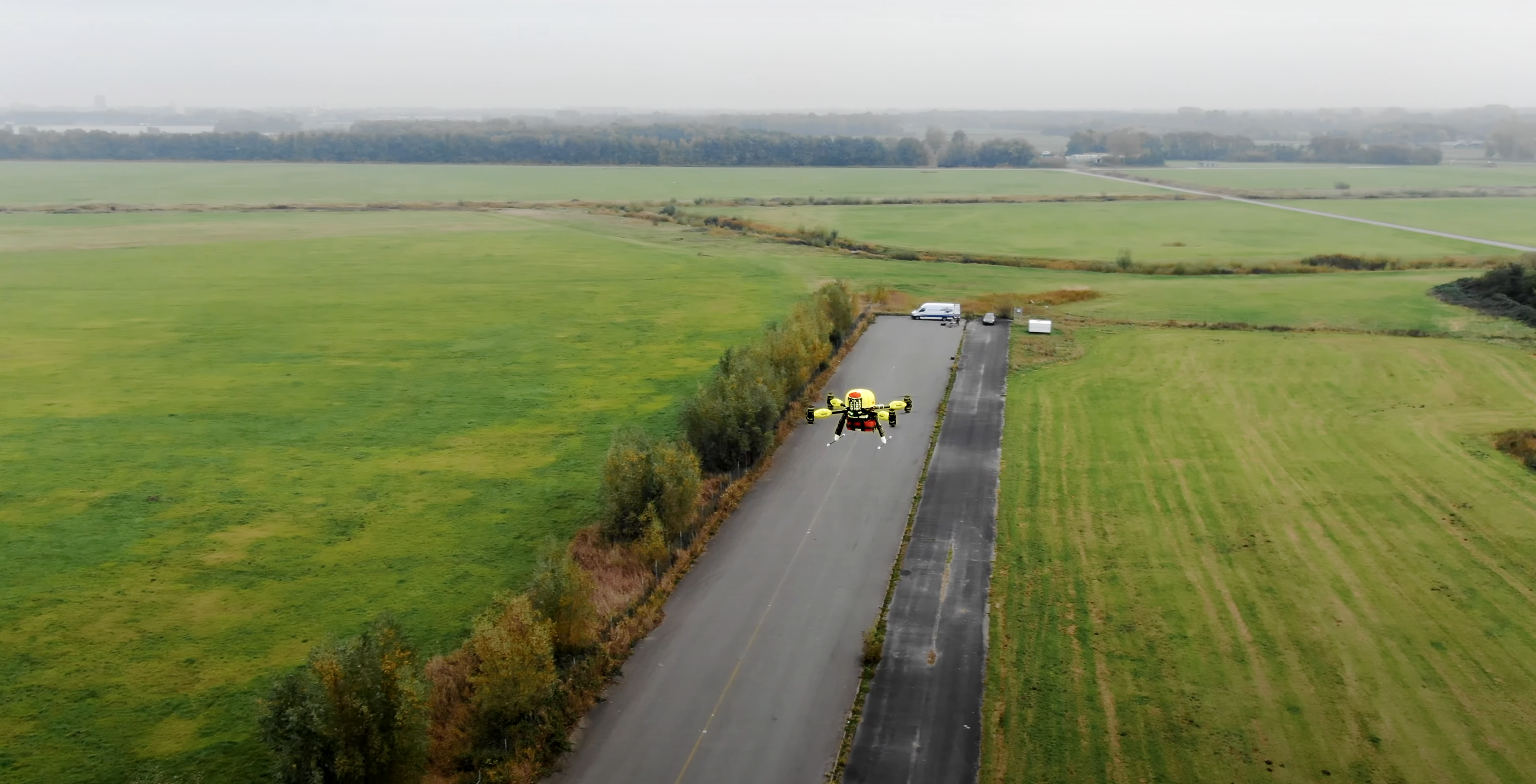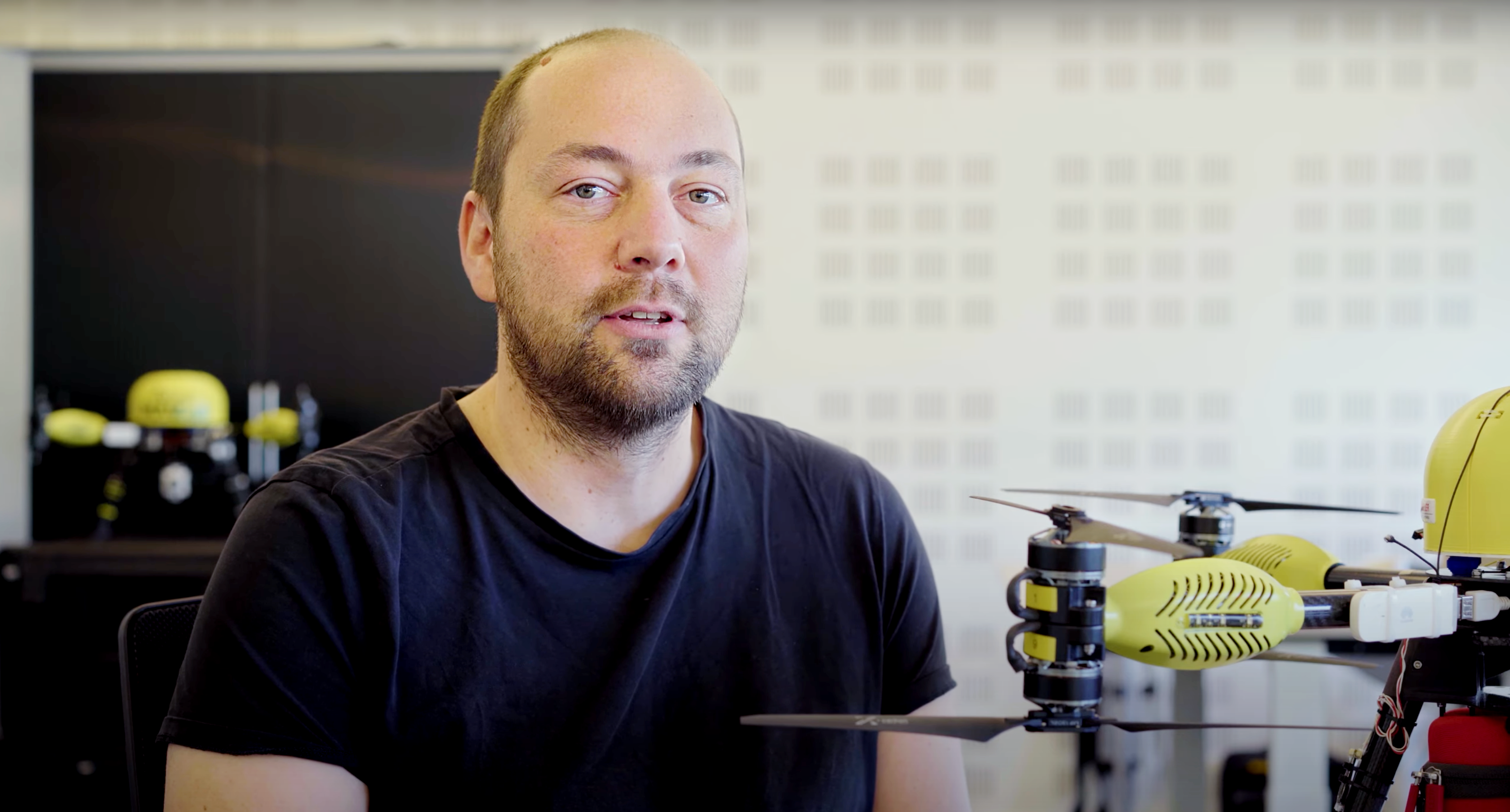“We should take the lead in this industry”
The test centre for drone and sensor applications Unmanned Valley will get access to a drone-corridor to sea, right over the dunes near Katwijk. This new flight path goes from former air force base Valkenburg (South-Holland) to the North Sea and has just opened.
Bart Remes, project manager and researcher at The Micro Air Vehicle Laboratory (MAVlab), which is part of the faculty of Aerospace Engineering at the TU Delft, is very pleased with the new test facility. “We have been able to perform our first test flight through this corridor with our AED-drone. We can now safely experiment with unmanned aerial vehicles (UAVs). Next to this, we can now fly at sea but also from Valkenburg towards the sea.”
Why is this corridor necessary?
“The sea will play a more and more important role in making the energy industry more sustainable. There will be more wind farms at sea, and the production of hydrogen will also take place at sea. These massive plants will need regular inspection. Drones can do this labour intensive and also sometimes dangerous job. The corridor from Valkenburg to sea makes it possible to test these kinds of drone flights. This is an amazing opportunity for the MAVlab and TU Delft, it means that we can test our new and revolutionary ideas in practice.”
What is it you are researching now?
“We research several aspects of drones. How it flies, the aerodynamics, the production, but also how to make it intelligent. We have, for instance, developed an avoidance algorithm which allows drones to detect other vehicles in the sky and avoid those. This is an important step, as it allows systems to operate autonomously and perhaps deploy it on a large scale."
But avoidance algorithms already exist, right?
“Yes, there are avoidance algorithms for manned aviation, however, this is only for large areas. The endless airspace so to say. Drones are limited to a small area in which they can fly. We call this geofencing. This technique prevents a drone from taking off from places where this is not allowed. We have now developed an avoidance algorithm that works for drones inside this geofence. The algorithm we invented demonstrates, a world’s first, that this is mathematically possible. We tested this and it is ready for use. For instance in this new corridor. But also in the future, when cities are connected through corridors and multiple drones will fly back and forth between cities at the same time.”
Which other applications do you see for drones?
“Besides the AED-drone, we can use drones to keep an eye on our coastline, so we can see that our seaside guests are safe and no one will drown. Furthermore, drones can be used in harbours to make shipping more sustainable. Ships have to meet certain requirements, for example for their fuel. Drones can fly in the exhausts and measure if prohibited substances are used. At this moment, this is barely done, let alone in real-time. Or taking samples from boats. Drones can accelerate this process.”
No supersonic futuristic idea?
“Hahaha, no. We only create the technology. We make it possible, well-conceived, and safe. After this, creative entrepreneurs will undoubtedly come with brilliant new ideas and make money out of it. But that’s not the role of the university.”
Alright, that’s fair. But what are your goals?
“The reason that we have been working for 5 years to get this corridor in Valkenburg off the ground, is that we needed to go abroad for our testing. To Australia or Portugal for instance. My main goal was a testing area in the Netherlands, towards the sea. The North Sea is the perfect place. We can safely and thoroughly test and fly further. I hope that, in a few years’ time, we can take off in Valkenburg, fly over the Dutch coast towards Den Helder, and land on de Kooy (airport).”
A few years’ time? What are the obstacles?
“Regulations. With new developments, technology is always a step ahead. Later, the governments and institutions will follow. That is also the case here. That is why it is a good thing that these institutions get involved at an early stage. I am happy to see a change in the Netherlands. The government sees the value of technology, as well as an upcoming economy. They understand that this needs to happen. Otherwise, we will miss the boat and see the business go to other countries.”
How important is this for our country?
"For the Dutch industry, this is very important. We are a water nation. Dealing with water, but also measuring and monitoring is essential. Next to this, we should take the lead in this industry. Take for instance Denmark, a country that is now leading in wind turbines. This knowledge was also available in The Netherlands and Belgium, but didn’t do much with it. A good location for testing in The Netherlands ensures that you can try out different scenarios here, develop the knowledge here, and ensure that the Dutch companies can exploit this knowledge here as well.”
What makes the Netherlands such an interesting test location?
“The North Sea is a challenging environment. There is a lot of wind and throughout the year you will see all kinds of weather conditions. If somethings works here and we are able to keep the drones in the air, then it has been properly tested and is it ready for the international market.”
The new corridor will be used for so-called BVLOS-flights (Beyond Visual Line Of Sight). Drones will fly out of sight of the pilot, sometimes even fully autonomous. Being able to test these flights under controlled circumstances is essential for new drone applications. For example, drones of the fire fighter that can take images of incidents for the control room, or drones that can provide life-saving medication.

